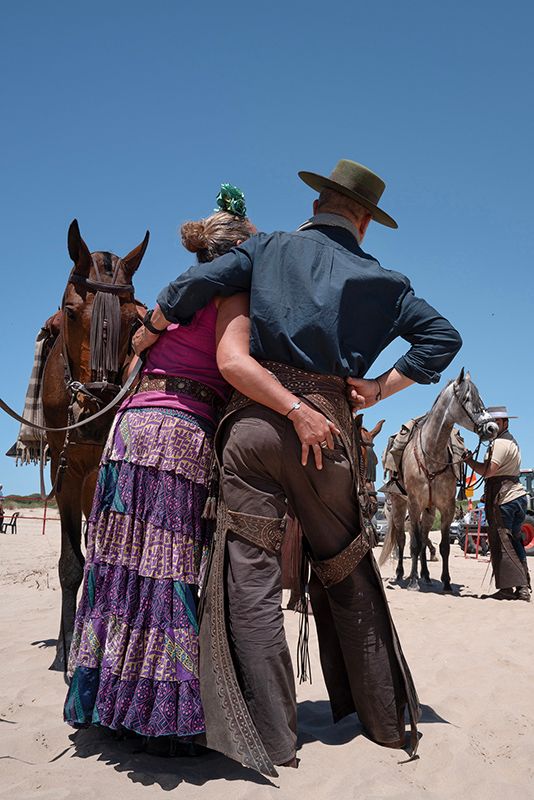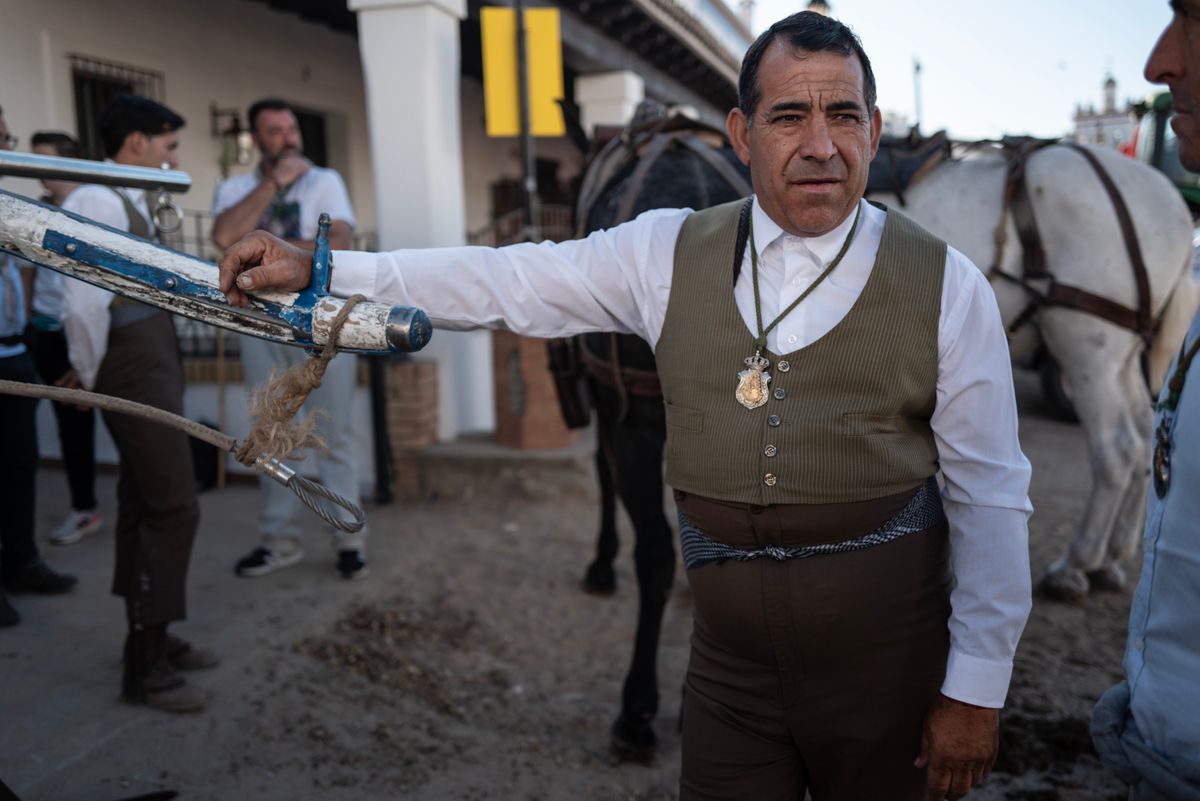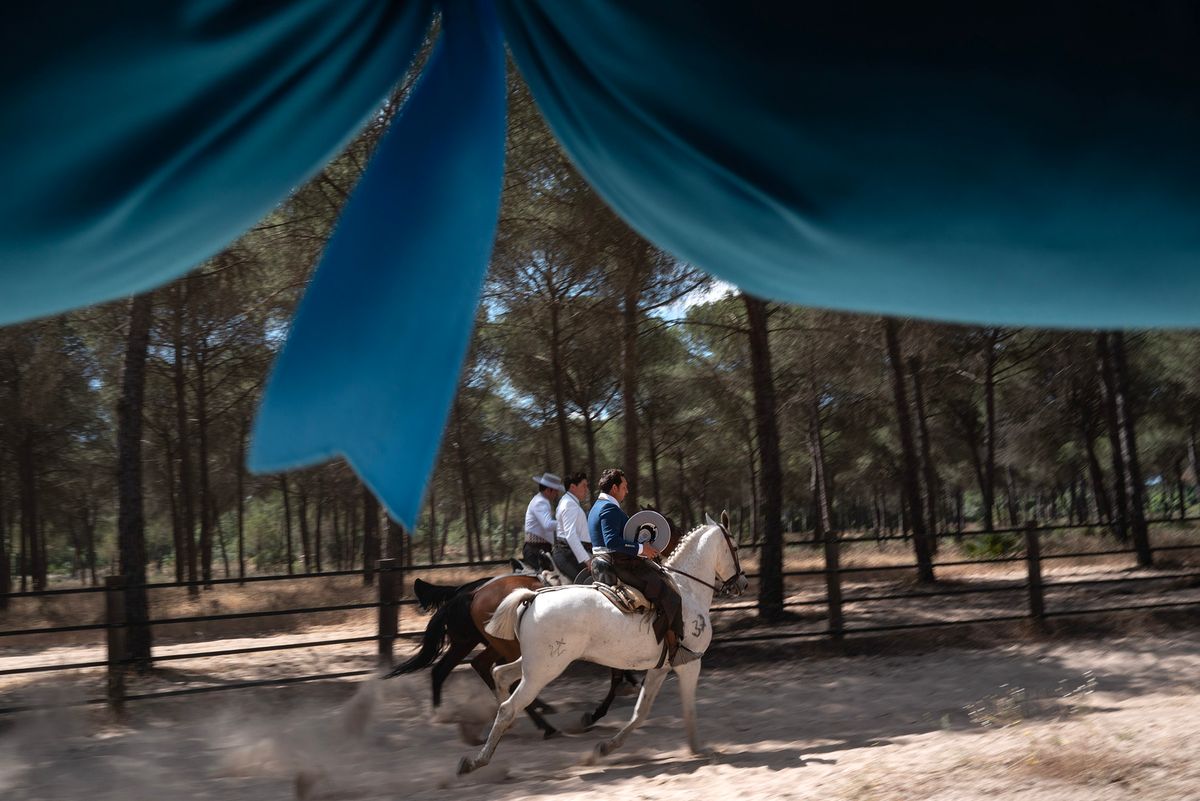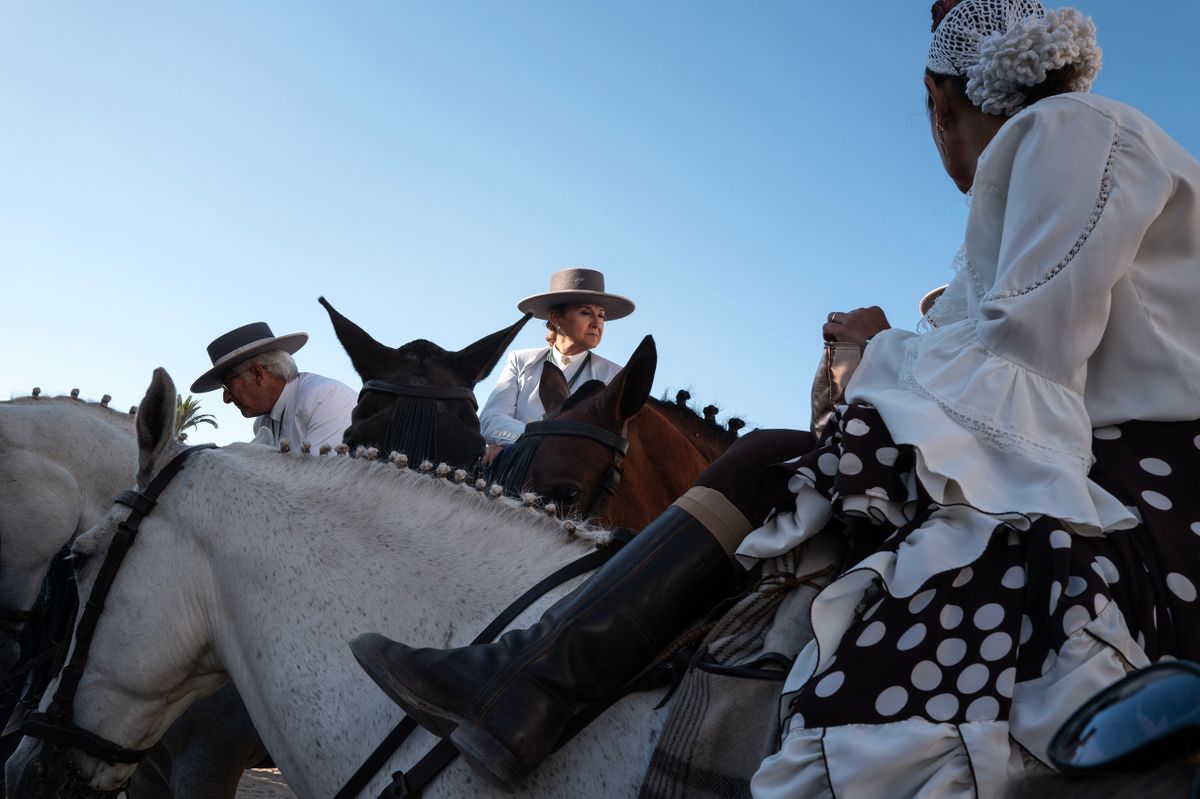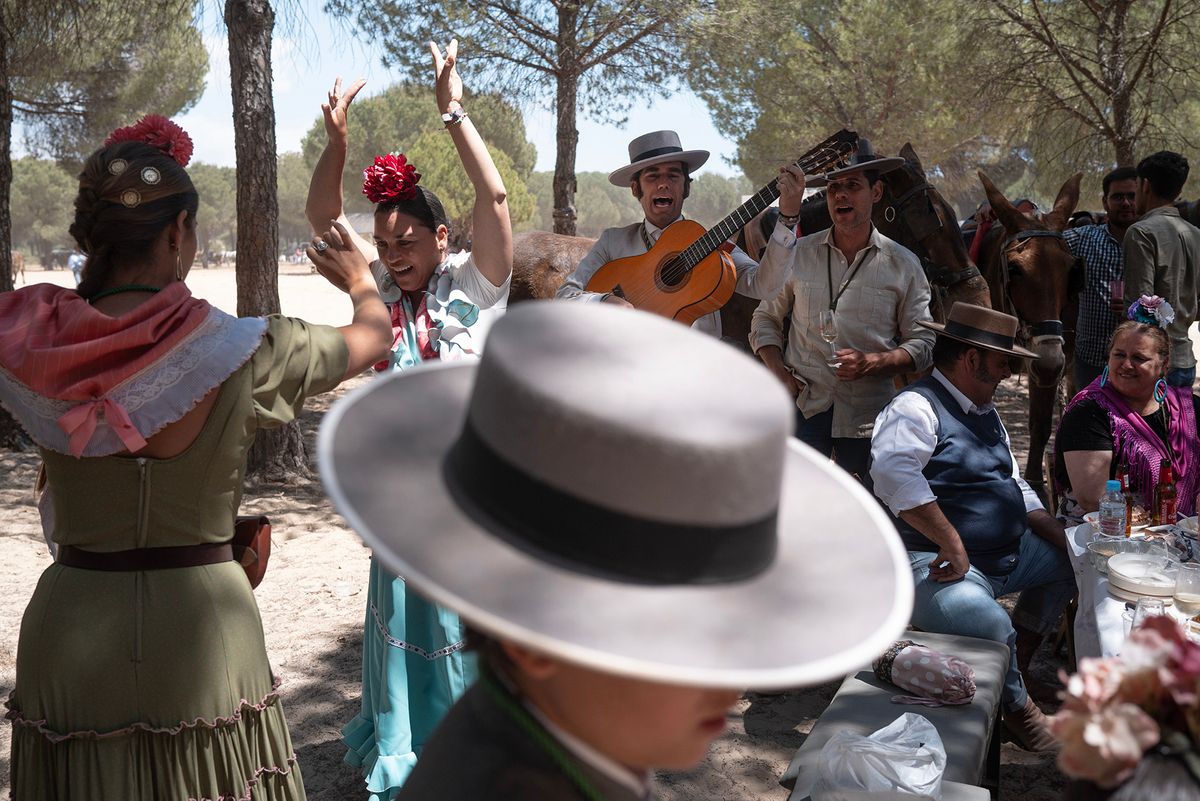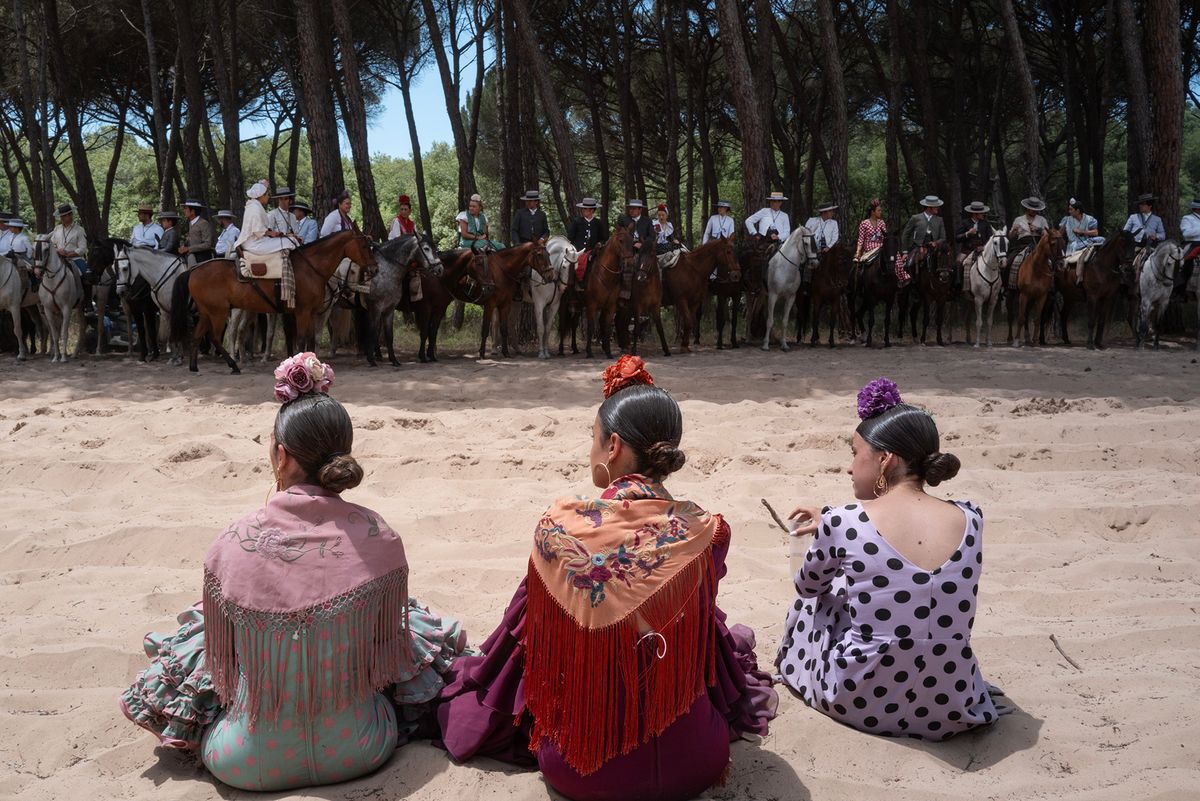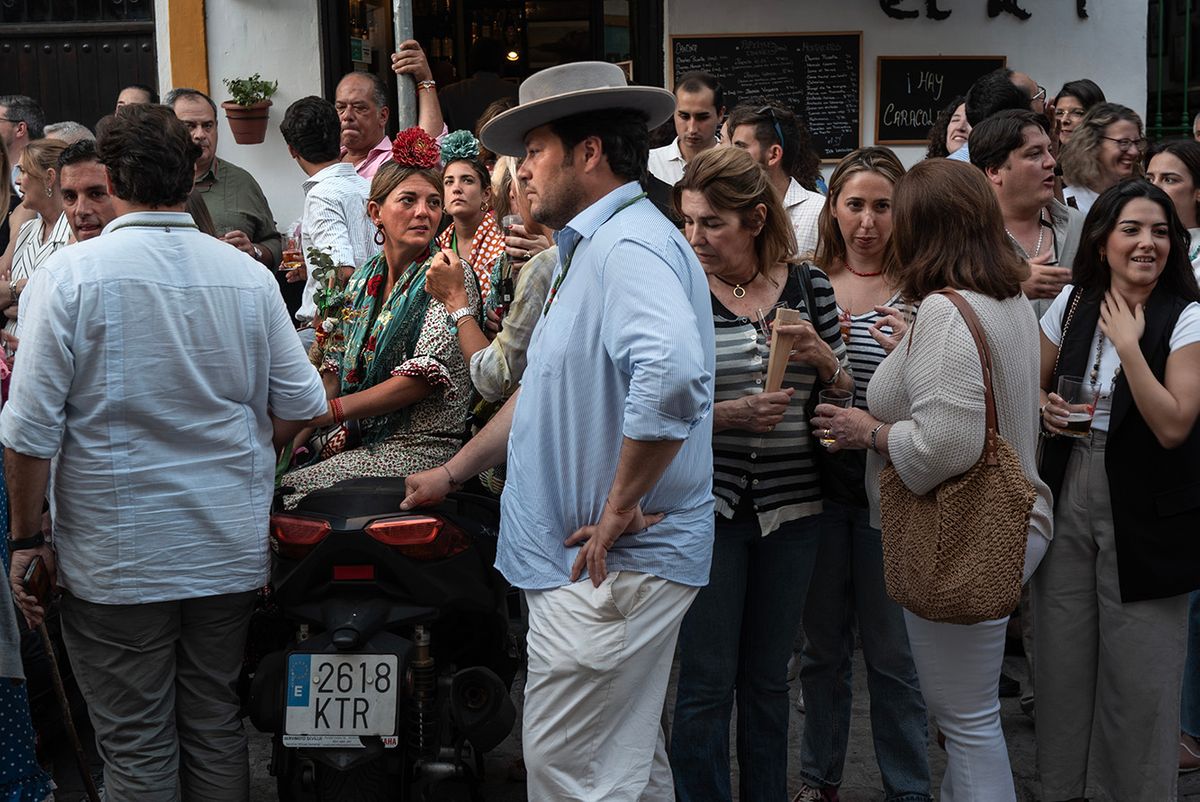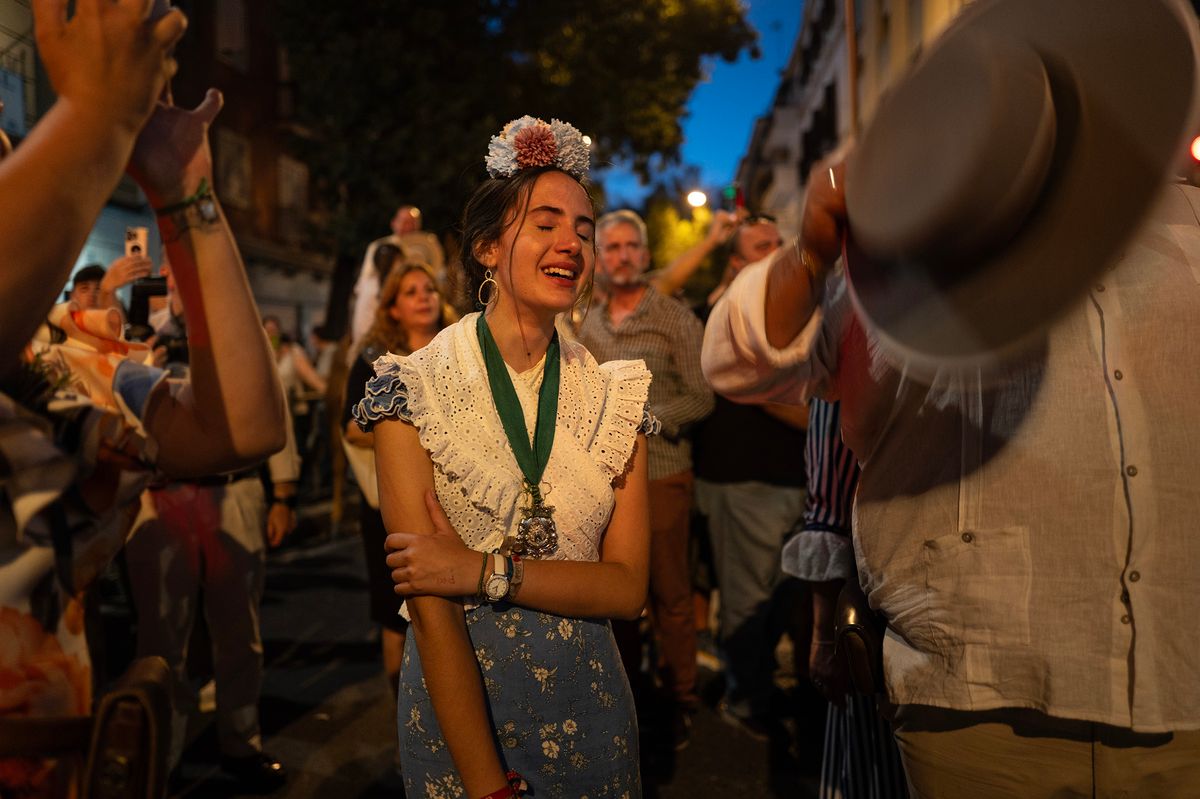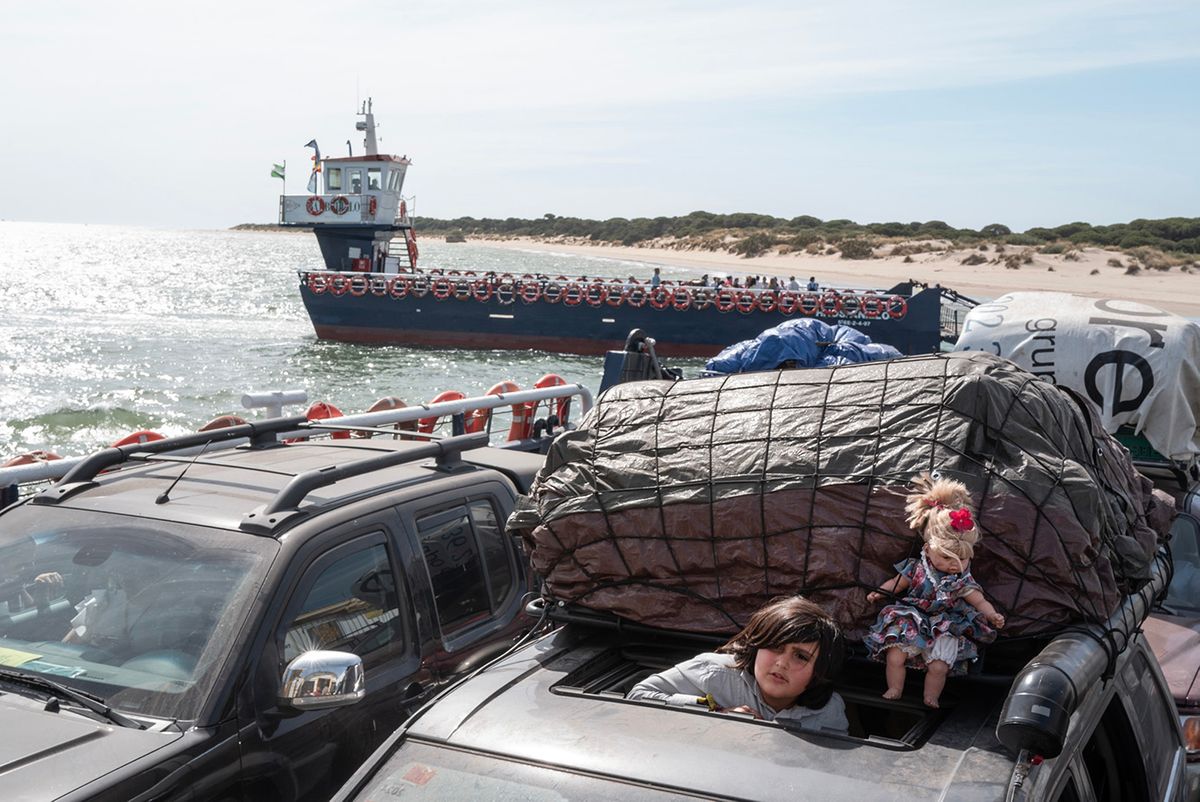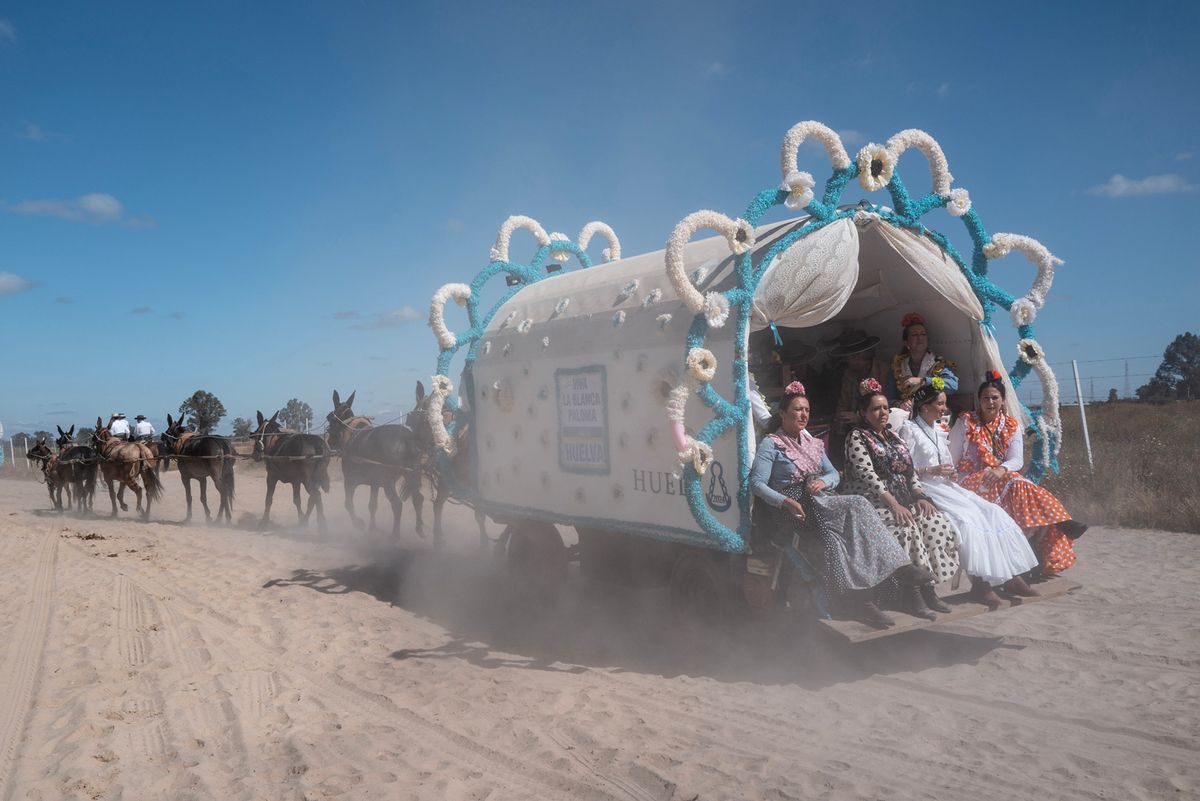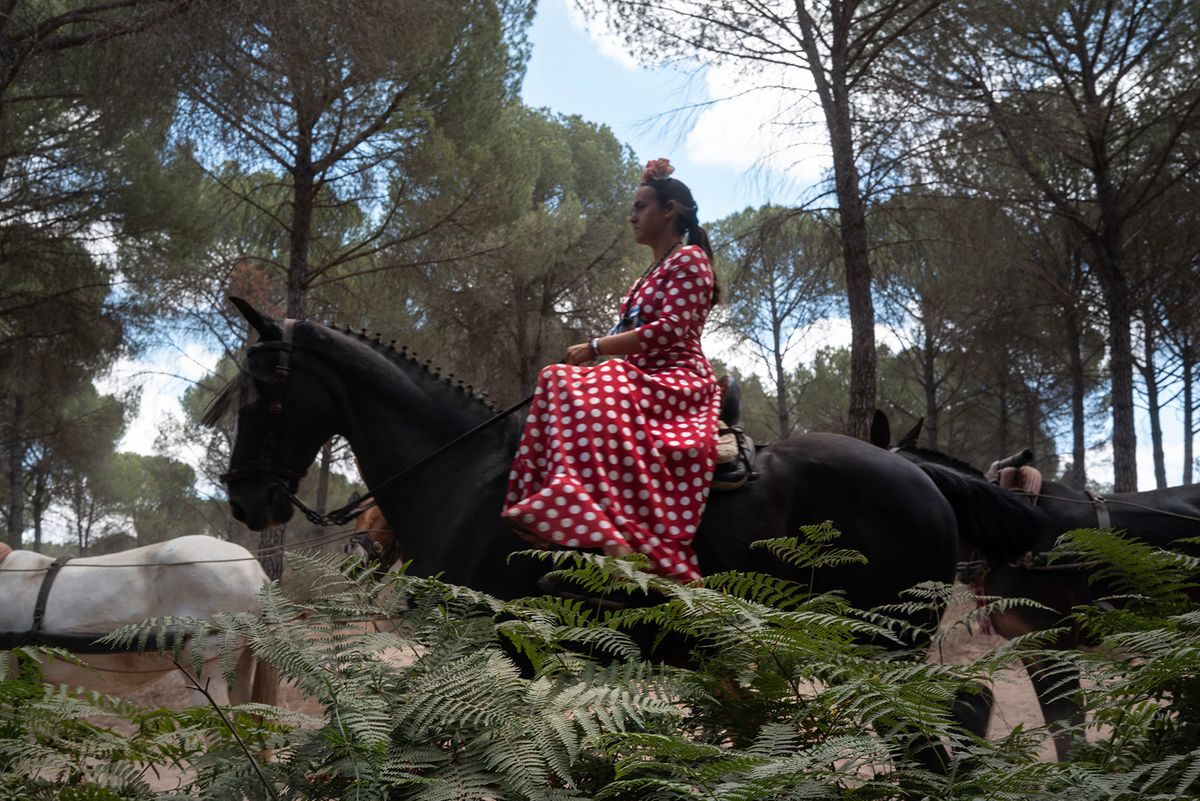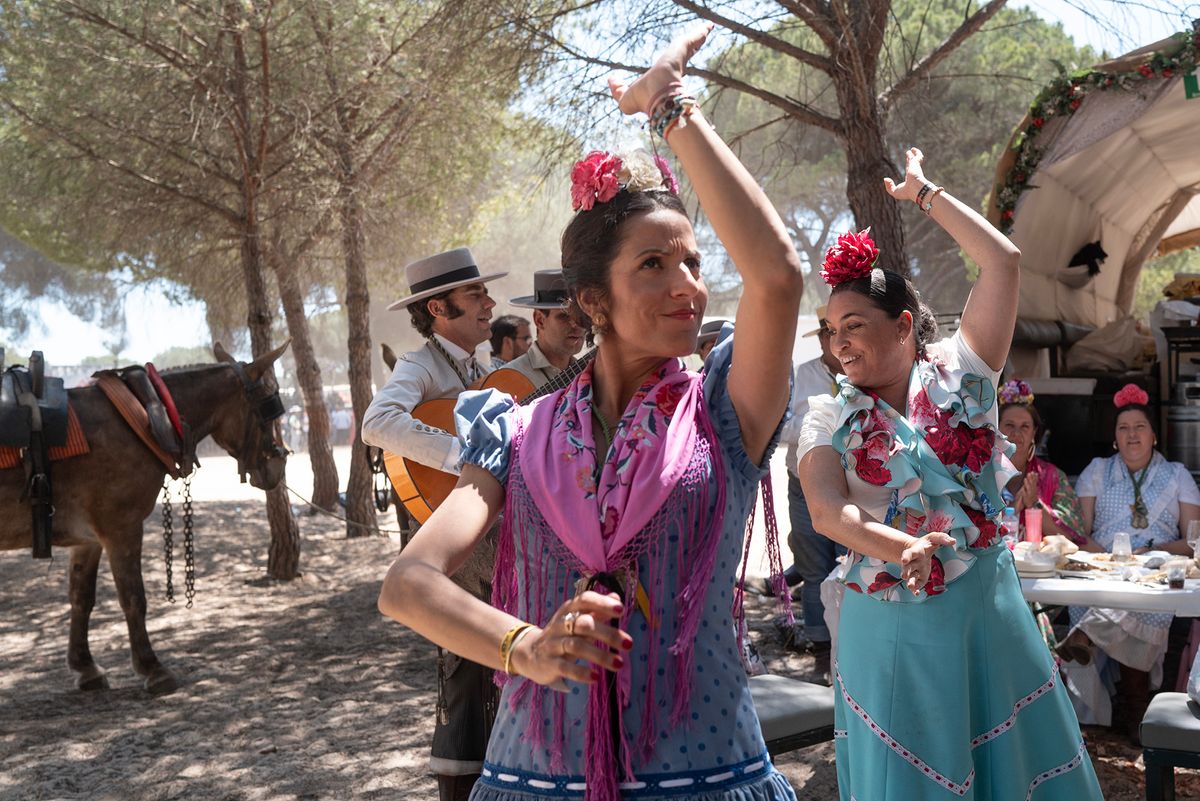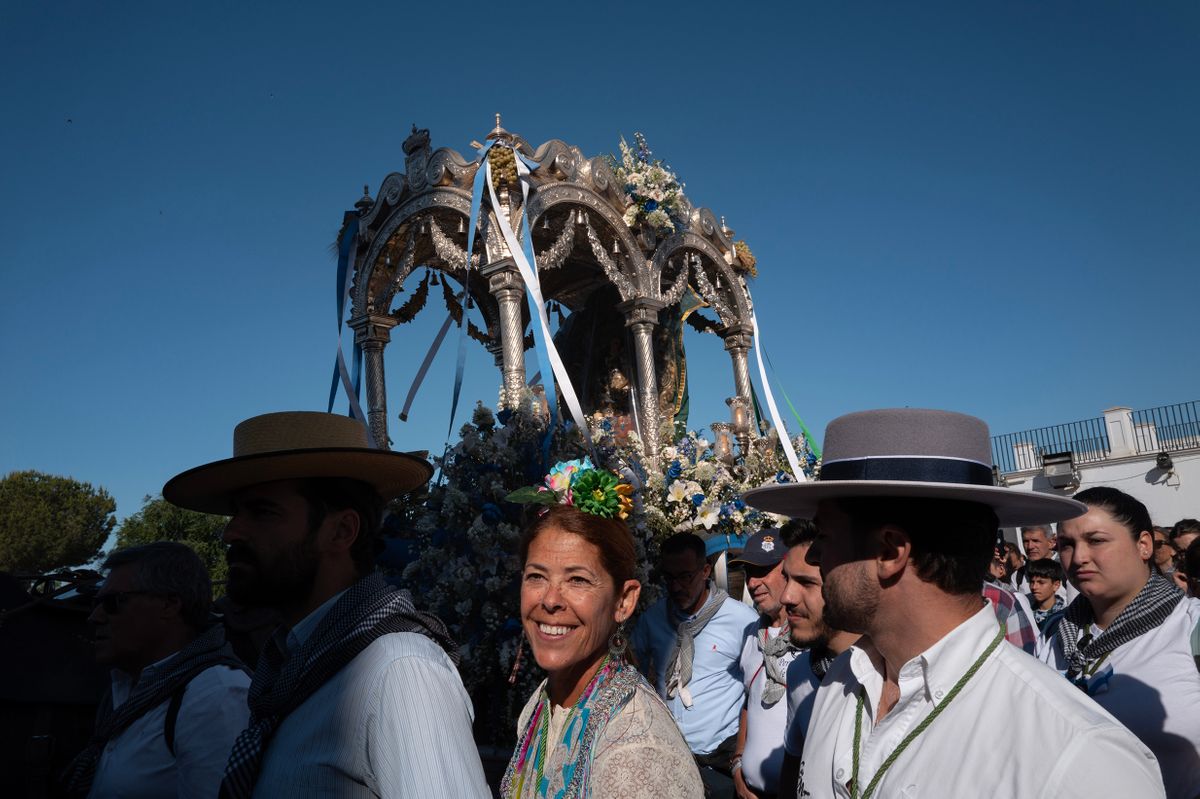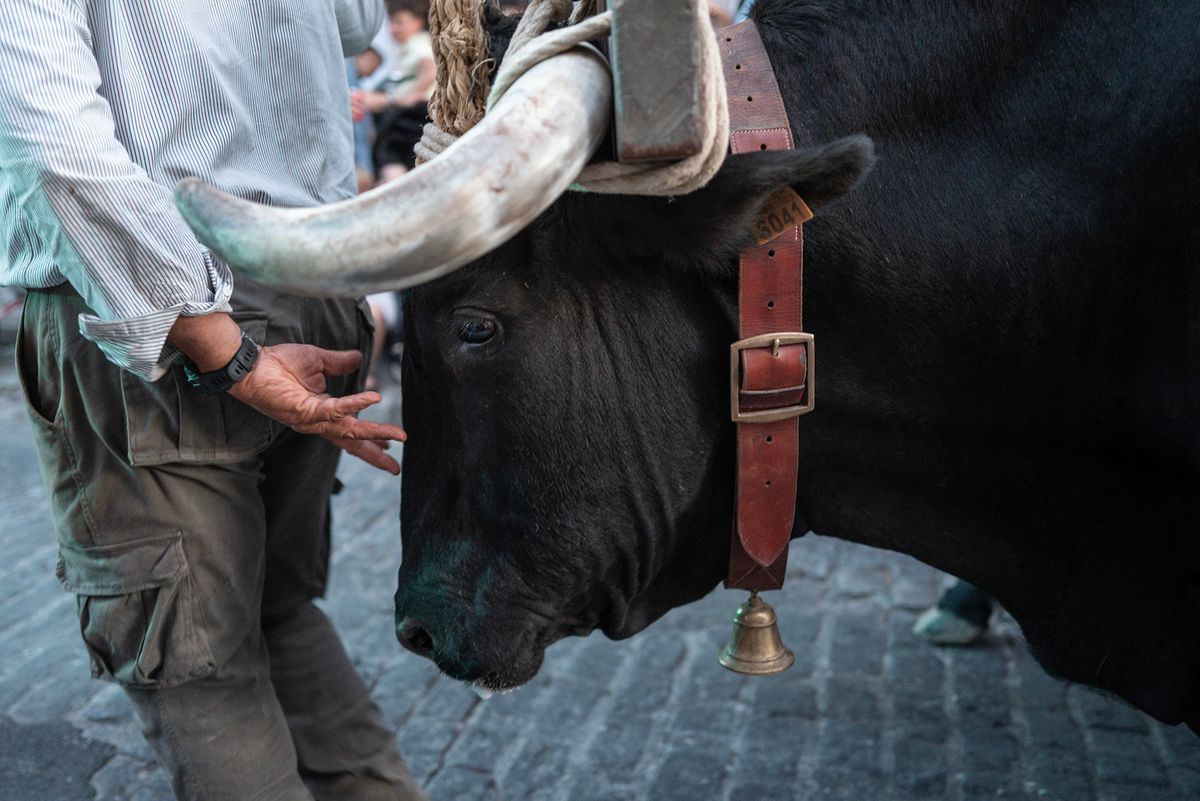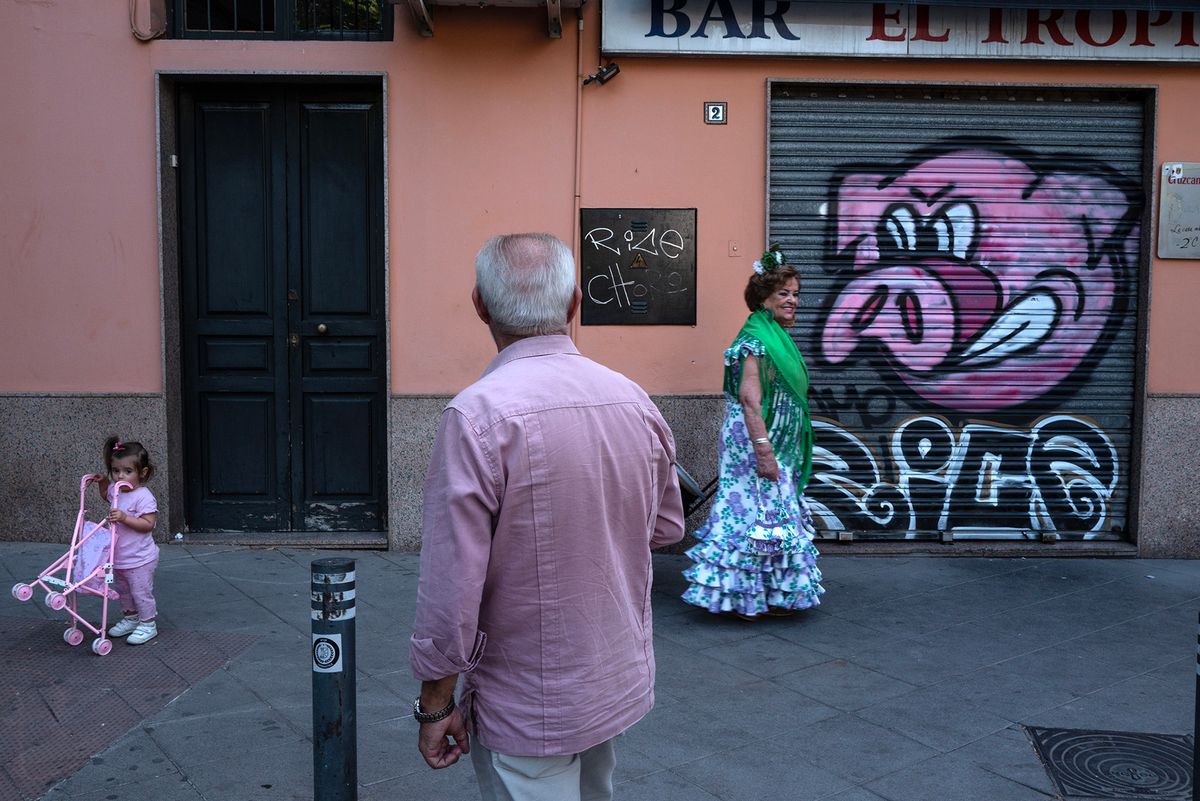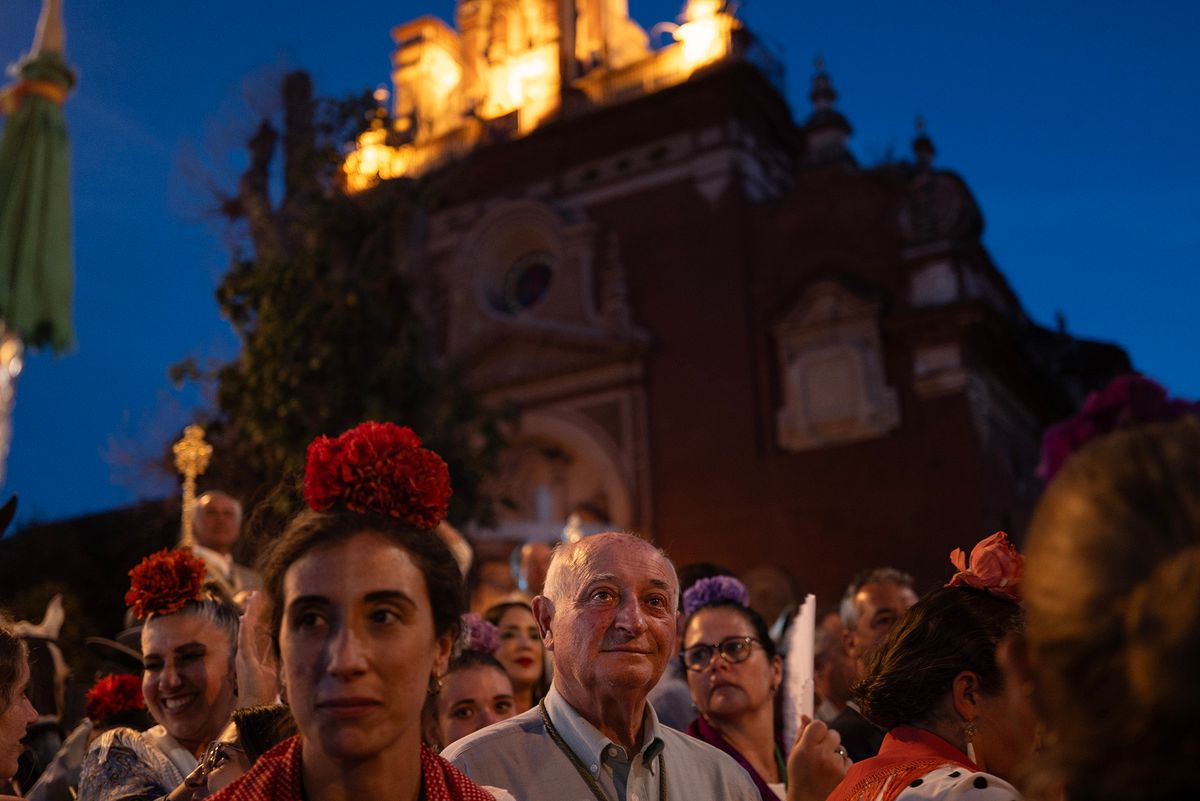The El Rocío Pilgrimage
A Spanish Village Where the Past Feels Present
It was hard to make out the face through all of the dust, but the man’s old-fashioned clothing gave him away. A flat-brimmed sombrero Cordobés sat on his head. He strummed a guitar from atop an Andalusian horse. There was no question why he was here trotting the road to this village between Seville and the Gulf of Cádiz on this day in May.
In front of the rider, in the back of a covered wagon adorned with colorful flowers, a group of women wore traditional flowing dresses adorned with polka dots and floral patterns. They drank manzanilla wine as they sang and clapped in a hypnotic rhythm.
A foreigner’s thoughts of Spain are often populated with the potent and romantic imagery of Andalusia: flamenco, the magnificent horse culture, processions and the seductive sound of the canto profundo. The El Rocío pilgrimage embodies all of that imagery.
